This post may contain affiliate links. Please read our privacy policy.
Do you find yourself overwhelmed by all of the different types of salt at the grocery store? Learn about the various salts used for cooking so you know what to look for next time you go shopping!
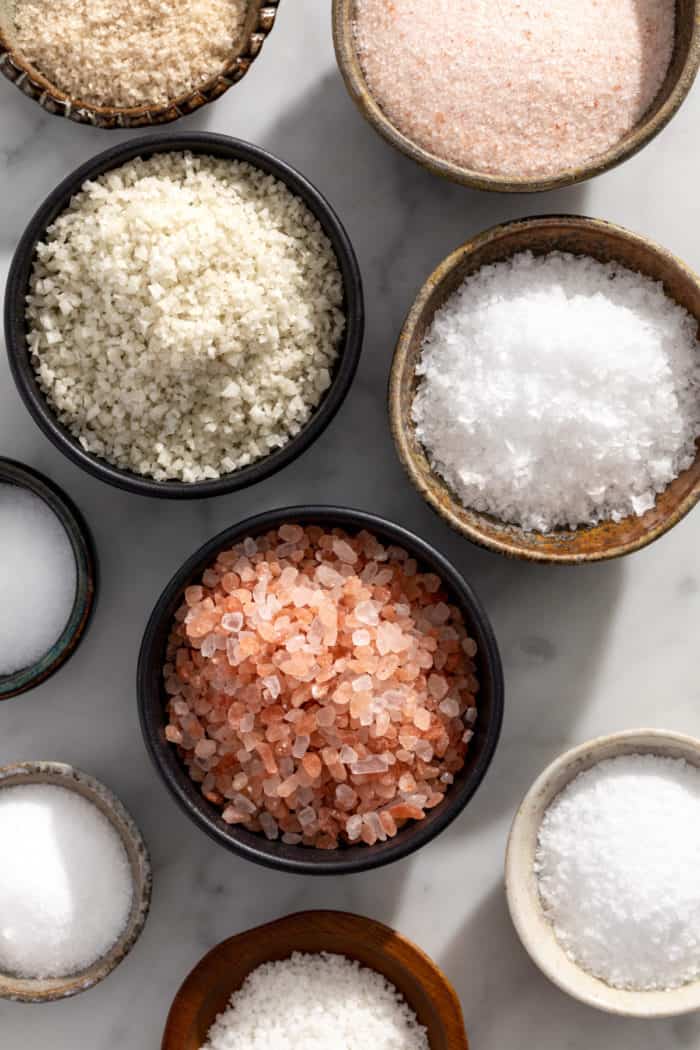
I don’t know about you, but when I was growing up, there was pretty much one kind of salt: table salt. We used it for cooking and baking and that was it.
If you had a grandma who made pickles, sometimes you’d come across pickling salt. And once in a while you might see rock salt for using in ice cream makers, but that wasn’t very often.
Of course other types of salt existed, but they weren’t easy to find at your standard grocery store back in the ‘80s and ‘90s. But these days? You walk into the spice aisle and you can find at least half a dozen different types of salt.
I spend a lot of time watching the Food Network and scrolling through cooking TikTok, so I’ve learned a lot about how different kinds of salt are used. But even then it’s easy to get them mixed up!
I’ve put together this post as a primer on the 9 kinds of salt most home cooks might encounter, including what each one is and how it’s used in cooking.
Now you’ll know what to look for next time you head to the grocery store or explore a specialty cooking shop!
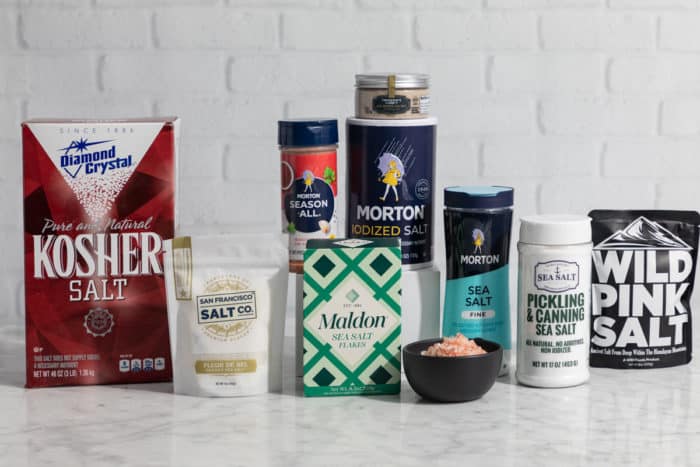
TYPES OF SALT FOR COOKING
There are dozens of different types of salt out in the world, but not all of them are edible. But even if you narrow your search down to the types of salt used specifically for cooking, there are still a ton of different kinds out there!
As you’ll see, the thing that makes each salt different is how it’s harvested, how much moisture it contains, the size of the grains, the color, and the minerals it contains.
There’s a lot of info out there, but I’ve taken the highlights and summarized them for each salt we’re going to talk about. Consider this a good starting point to make your shopping easier and to help translate if you see something specific mentioned in a post or recipe!
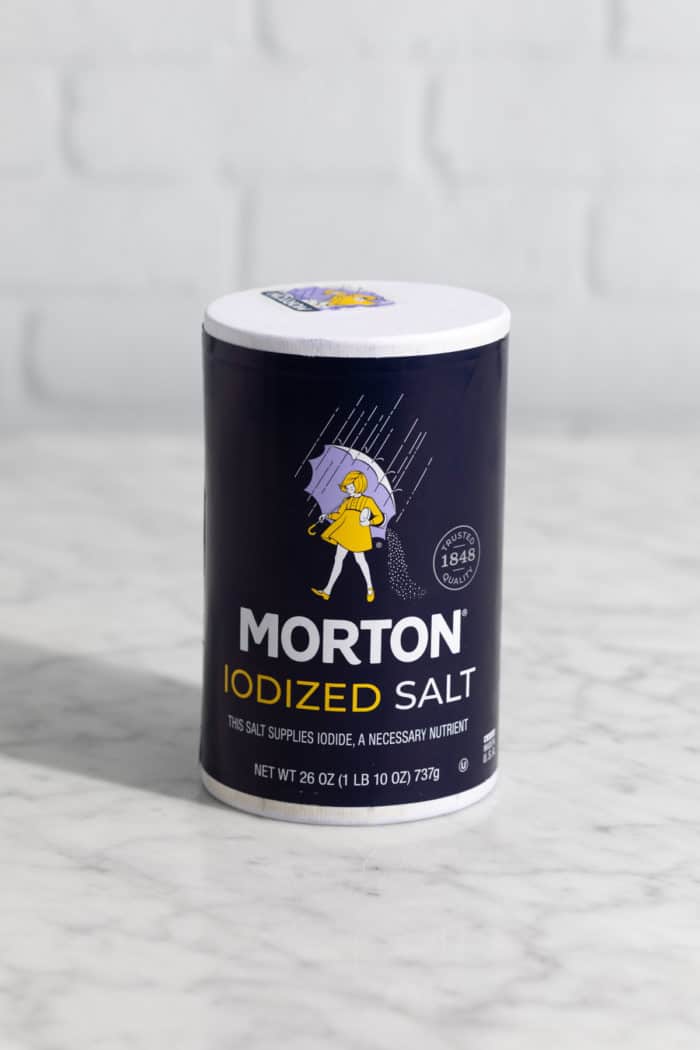
TABLE SALT
Table salt is that finely granulated salt that most of us are used to finding in salt shakers. It’s also probably what most of us grew up with in our kitchens. If you’re like me, it’s what you thought all cooking salt was for a long time!
What is table salt?
Table salt is one of the more highly processed types of salt. It is made up primarily of sodium chloride, with other minerals removed during processing.
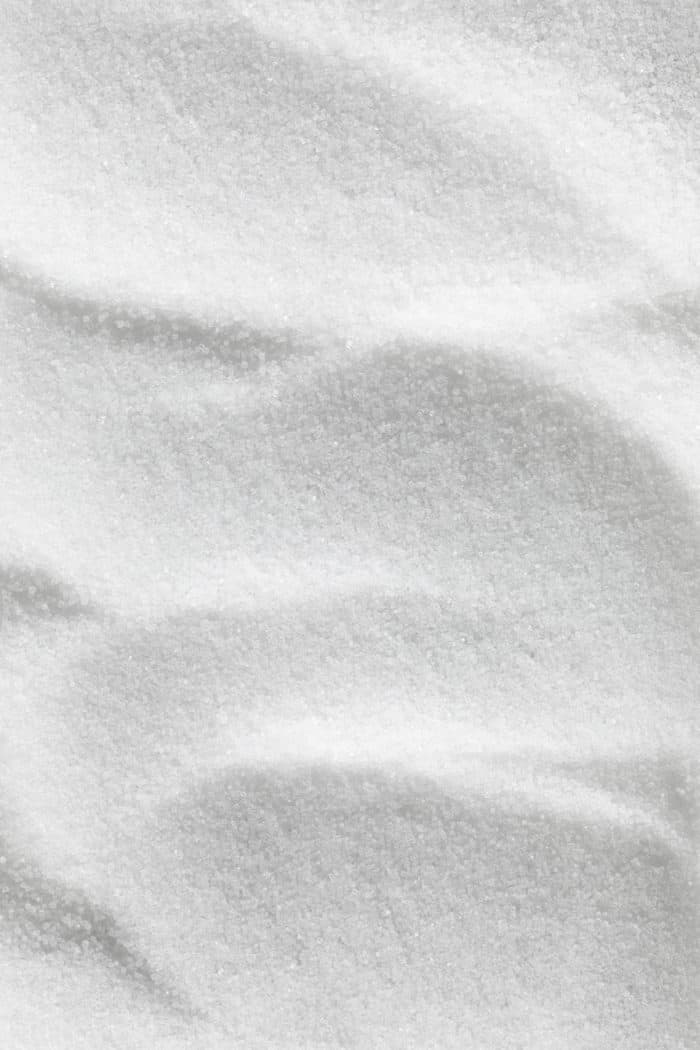
Table salt is typically mined from underground deposits and often includes added iodine to help prevent iodine deficiency.
Table salt uses
Like I said, table salt is what you’ll most often find in standard salt shakers, at least here in the US.
It can be used in cooking and baking just fine, but doesn’t usually add much flavor to your food other than saltiness since all of the minerals have been processed out.
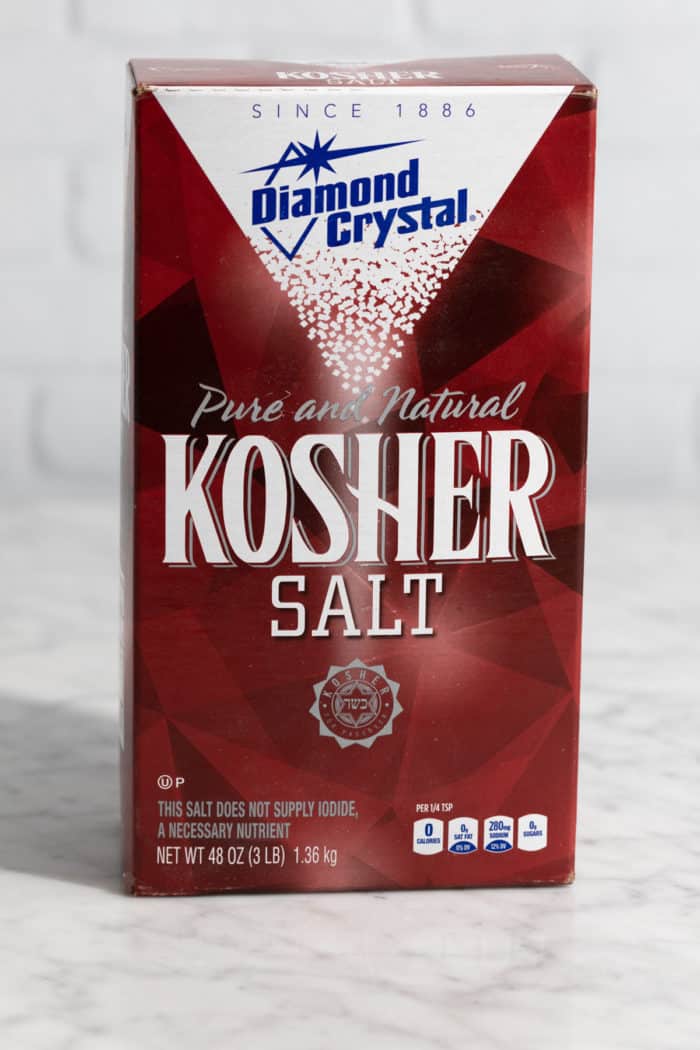
KOSHER SALT
Kosher salt is probably the first kind of salt, other than table salt, that I really learned about when I started watching Food Network.
What is kosher salt?
Kosher salt is less processed than table salt, although it is still primarily made up of sodium chloride.
Kosher salt has much larger crystals than table salt, and the shape of the crystals vary by brand – so does the salinity by volume.
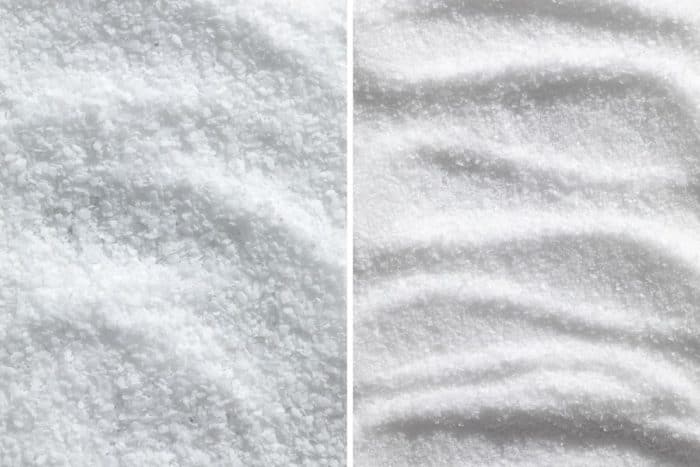
The name comes from its use in the Jewish practice of dry brining (or koshering) meat.
Kosher salt uses
Kosher salt is typically used in cooking, rather than as a table salt. It’s great in all general cooking and is perfect for brining meats. (Use it in your Thanksgiving turkey brine!)
Because of the size of the crystals, it’s also great for cleaning cast iron pans!
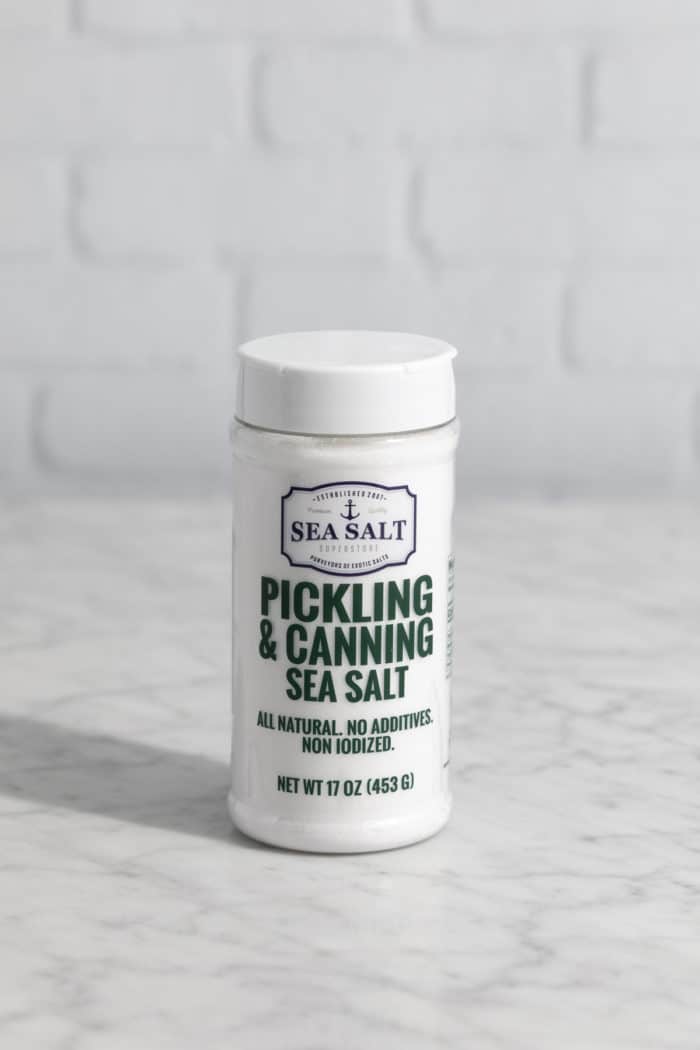
PICKLING SALT
Anyone who grew up with a grandma who canned and pickled summer vegetables probably knows about pickling salt.
What is pickling salt?
Pickling salt is pure sodium chloride. It does not contain any anti-caking agents or additives – this keeps the salt from discoloring pickles or making pickling brines cloudy.
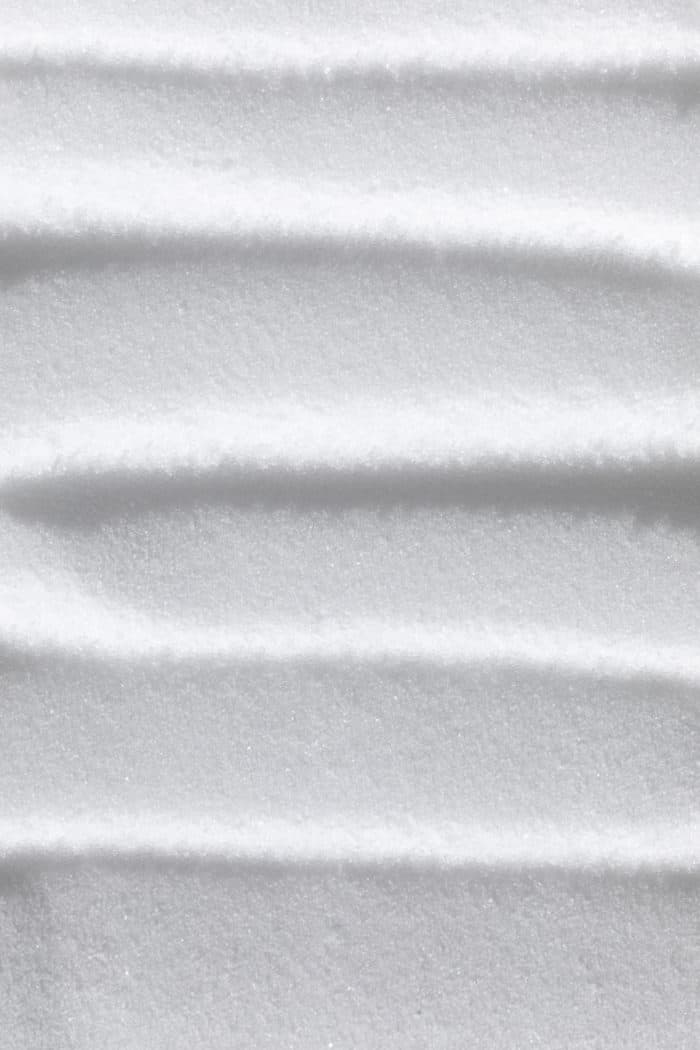
The granules are also very, very fine, which helps it dissolve easily in brines.
Since pickling salt doesn’t have any anti-caking agents in it, it’s extra important to store it in an airtight container away from moisture to prevent clumping.
Pickling salt uses
As the name suggests, pickling salt is great for using in pickles! Try it in pickled green beans.
If you want to make pickles but don’t want to buy pickling salt, you can substitute pure sea salt or kosher salt without additives.
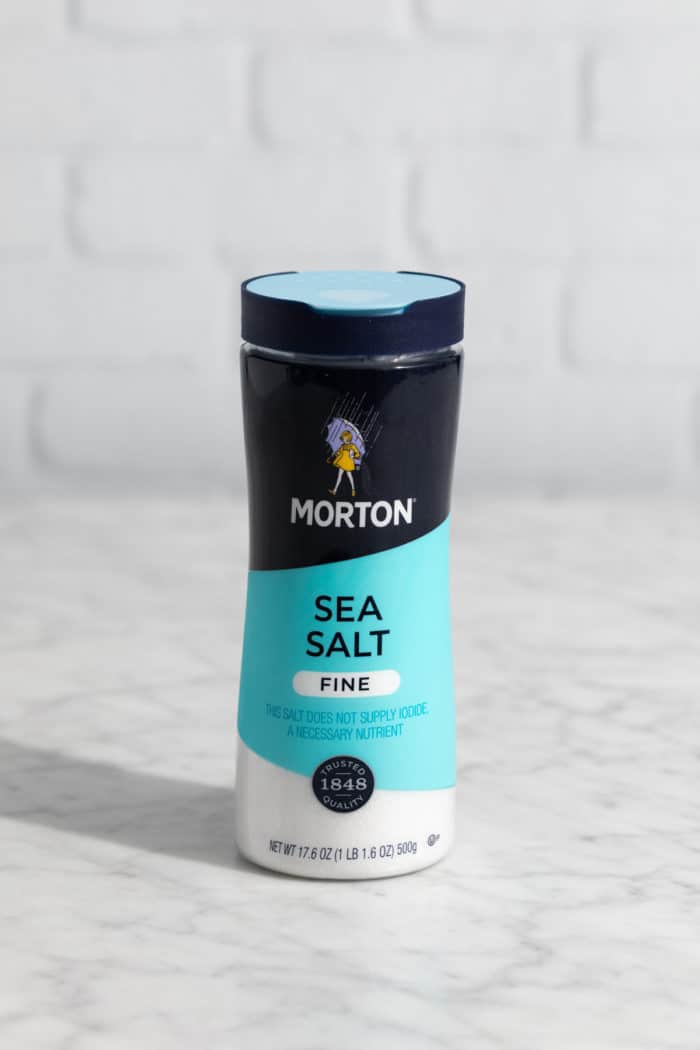
SEA SALT
Even if you grew up cooking and baking with table salt, you have probably heard of sea salt. But you might not know why it’s so popular!
What is sea salt?
Sea salt is sourced by evaporating ocean water or the water from saltwater lakes. As you might have guessed, it’s less processed than table salt and retains trace minerals that add flavor and (sometimes) color to the salt.
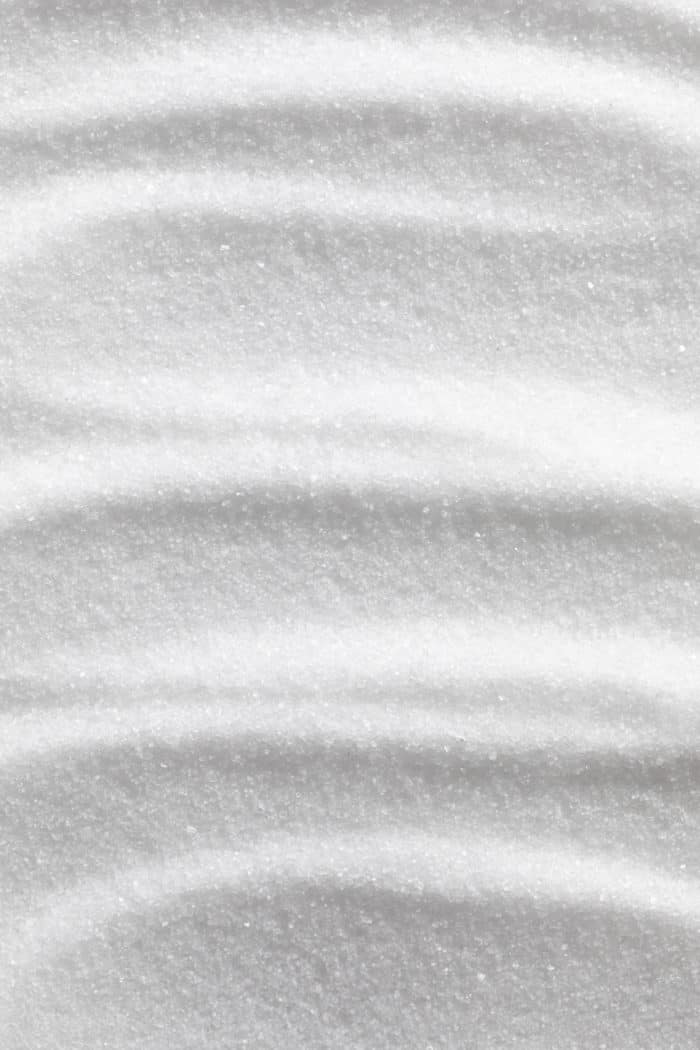
Sea salt is a type of salt that is available in everything from fine grains to larger crystals. You can put the fine grains in a salt shaker or get the larger crystals for putting into a salt grinder.
Sea salt uses
Sea salt can be used in any cooking or baking recipe, especially if it’s fine sea salt. These days, I like to use it in most cooking and baking, from homemade ranch seasoning and Chipotle vinaigrette to spritz cookies.
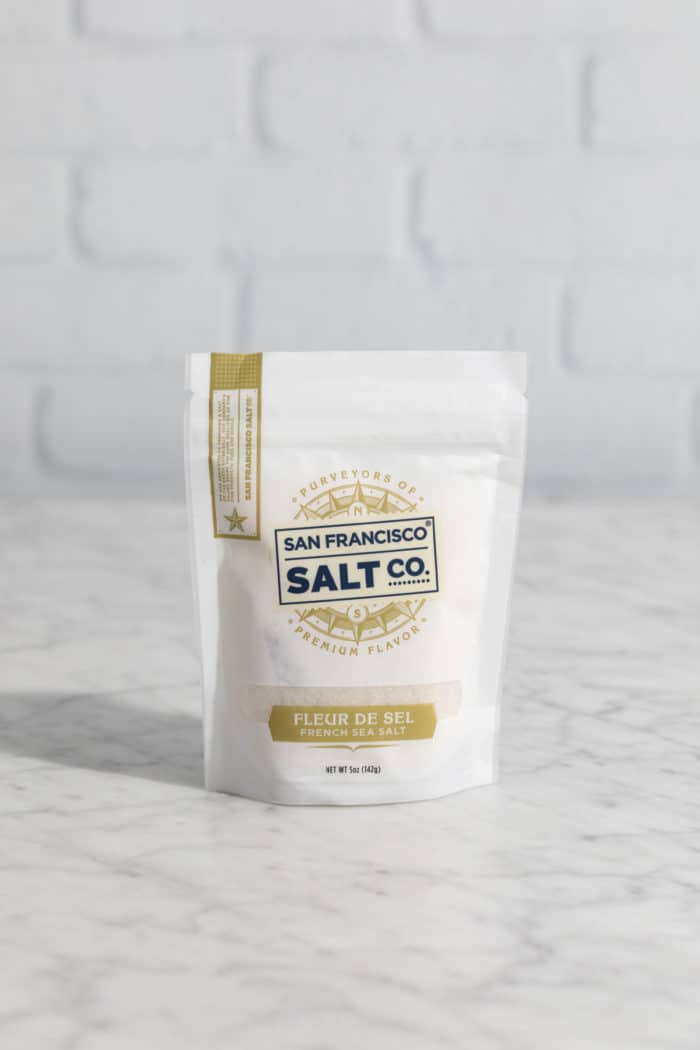
FLEUR DE SEL
Did you know that “fleur de sel” translates to “flower salt” in French? It sounds so fancy (and it is fancy!), but it’s becoming much easier to find in stores these days.
What is fleur de sel?
Fleur de sel is very labor intensive to collect, making it the most expensive type of salt.
Fleur de sel is the salt that forms as a thin crust as seawater evaporates. In fact, the name comes from the flower-like patterns that form in this crust.
It has to be harvested by hand using salt pans or marsh basins. Seawater is drawn in to evaporate, then the salt that floats on the surface is harvested as fleur de sel – the rest of the salt is collected as regular sea salt.
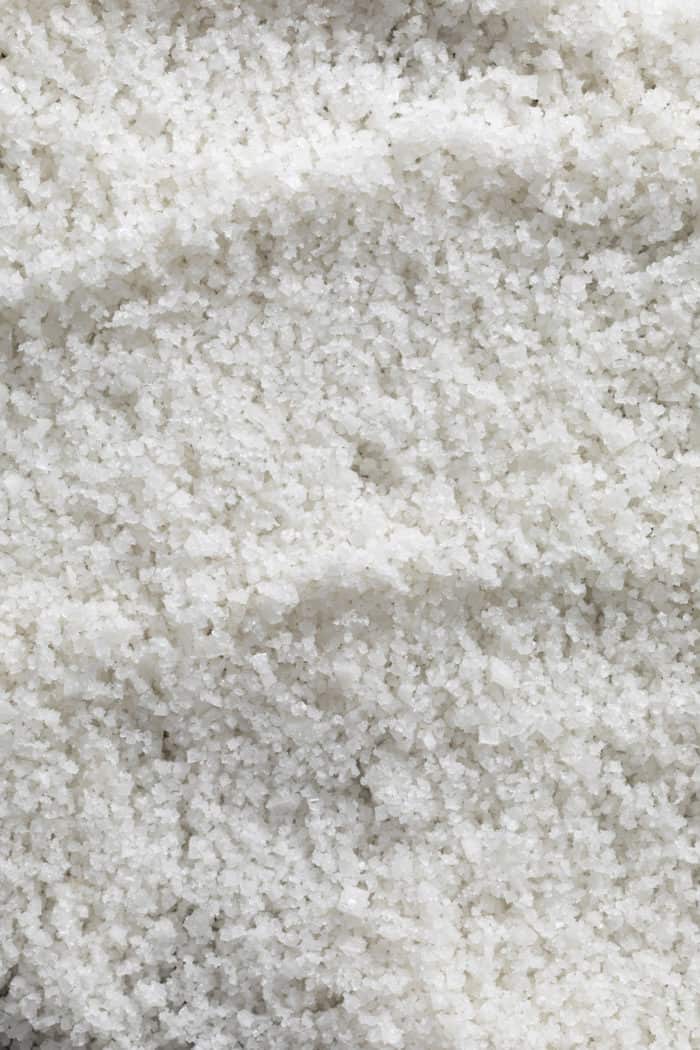
The fleur de sel crystals are then placed in special boxes to dry in the sun. It is handled very carefully through this whole process to avoid breaking up the delicate flakes.
Fleur de sel uses
Fleur de sel is used as a finishing salt. If you have some, try adding it to air fryer green beans or as a finishing to my favorite chocolate chip cookies.
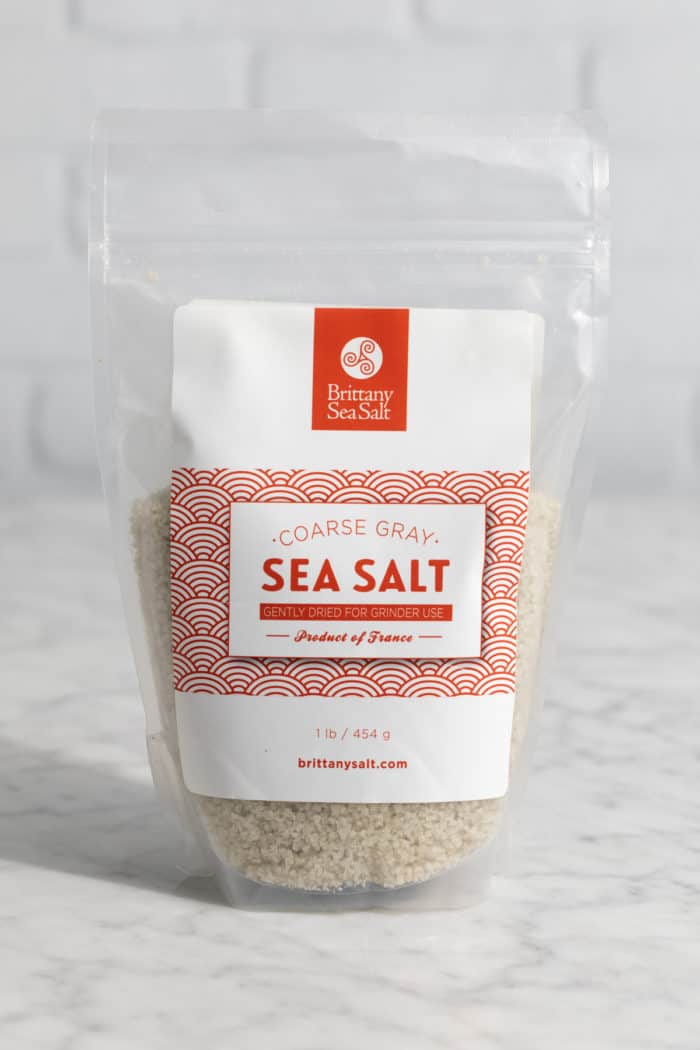
SEL GRIS (GRAY SALT)
Sel gris – which translates to “gray salt” – gets its name from it’s gray color. But it’s so much more interesting than just the name might suggest.
What is sel gris?
Like fleur de sel, sel gris is evaporated in the sun using salt pans, but it’s allowed to come into contact with the bottom of the pans, which is what gives it its color.
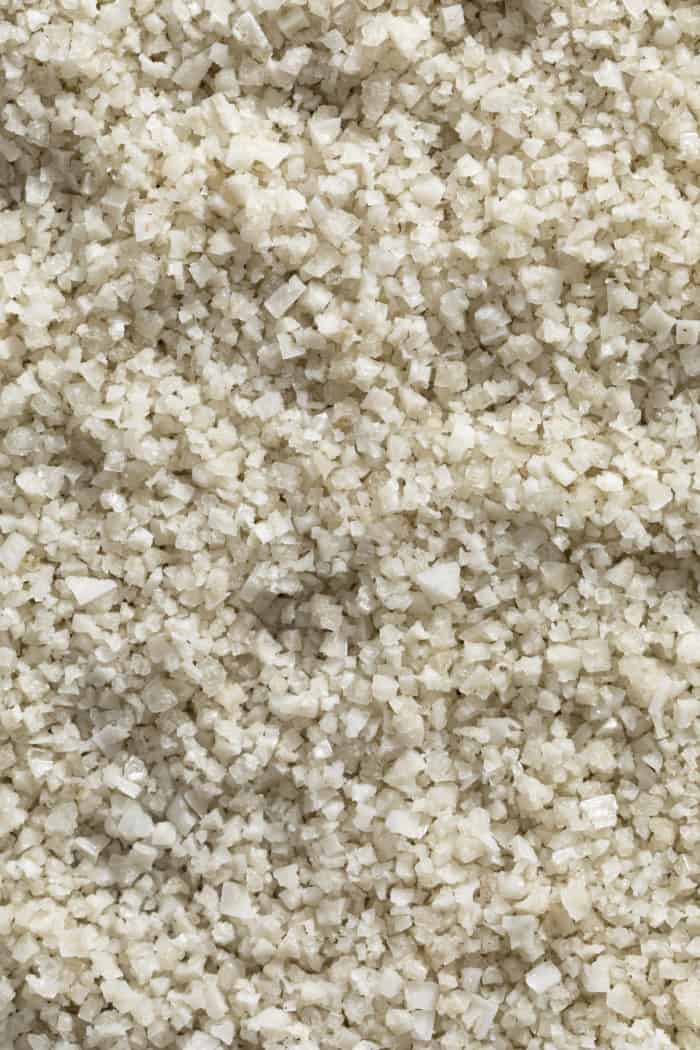
In addition to the color, it is also a coarser salt than fleur de sel. And, compared to other types of salt, it’s a pretty moist salt.
Sel gris uses
Sel gris can be used in pretty much any cooking or finishing application, but it is most commonly paired with hearty foods like steak and root vegetables. Try it on air fryer roasted potatoes or sauteed radishes.
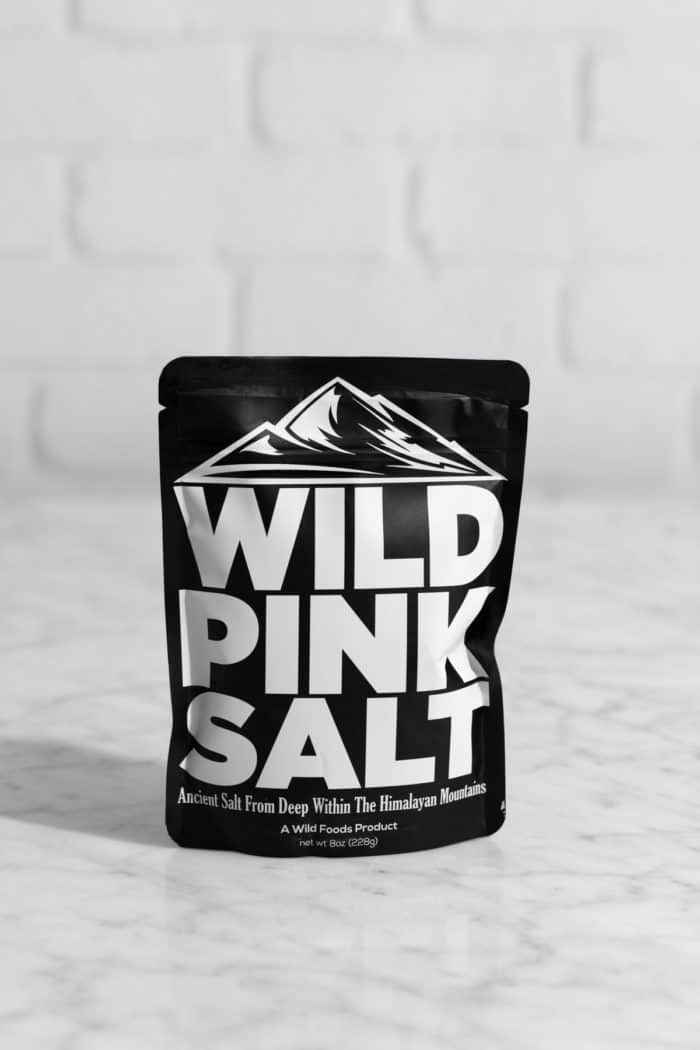
PINK SALT
If you know anyone with one of those Himalayan salt lamps, then you’re already familiar with pink salt!
What is pink salt?
Himalayan salt is the most popular and well-known type of pink salt. It is a rock salt mined from the Punjab region of Pakistan.
Pink salt retains its minerals, giving it its pink color and flavor. Because of the minerals, some people believe it to be a “healthier” salt, although there is little research to confirm this.
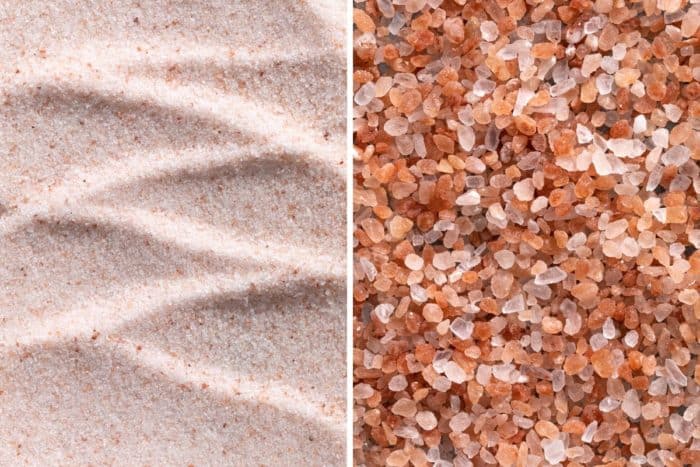
Like sea salt, pink salt is one of the types of salt you can find in fine granules, larger crystals, and even big slabs.
Pink salt uses
Again, similar to sea salt, you can use pink salt in pretty much any cooking and baking. Try it in chicken and wild rice soup or air fryer rotisserie chicken.
One thing that sets pink salt apart from other types of salt is that it can be used as a cooking surface as well! The slabs and blocks can be used for grilling and sauteing and can even be used as a serving platter.
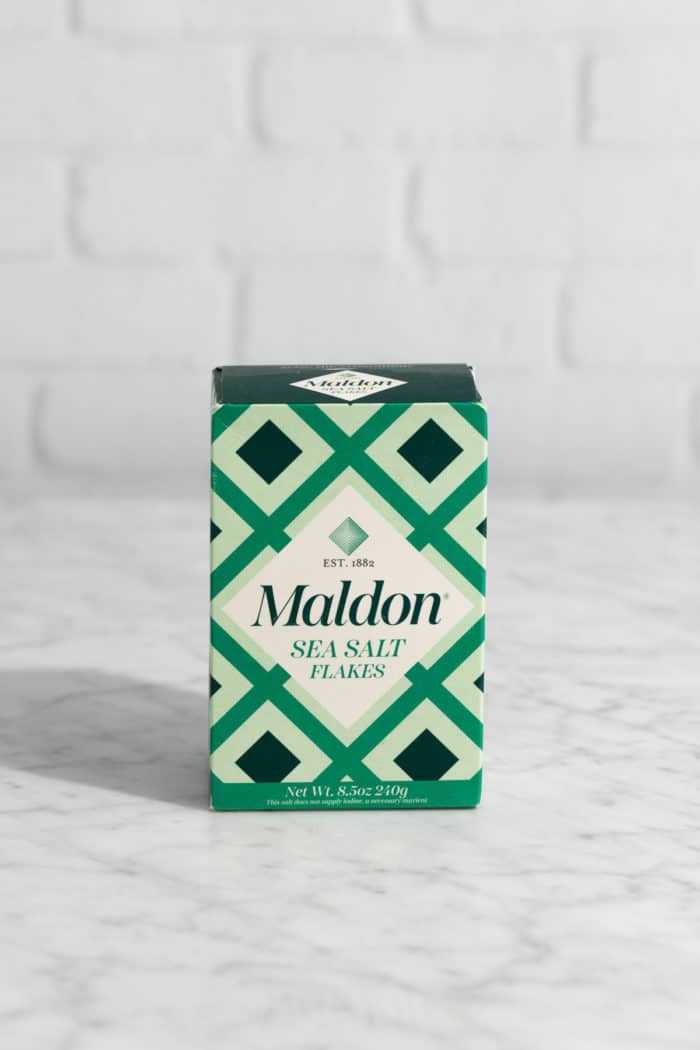
FLAKE SALT
Have you ever seen me call for finishing a dish with flakey sea salt? Then you are already a little bit familiar with flake salt!
What is flake salt?
Flake salt is a type of salt with flat, dry, flake-like crystals. (Rather than the diamond-shaped crystals of some kosher salt, etc.)
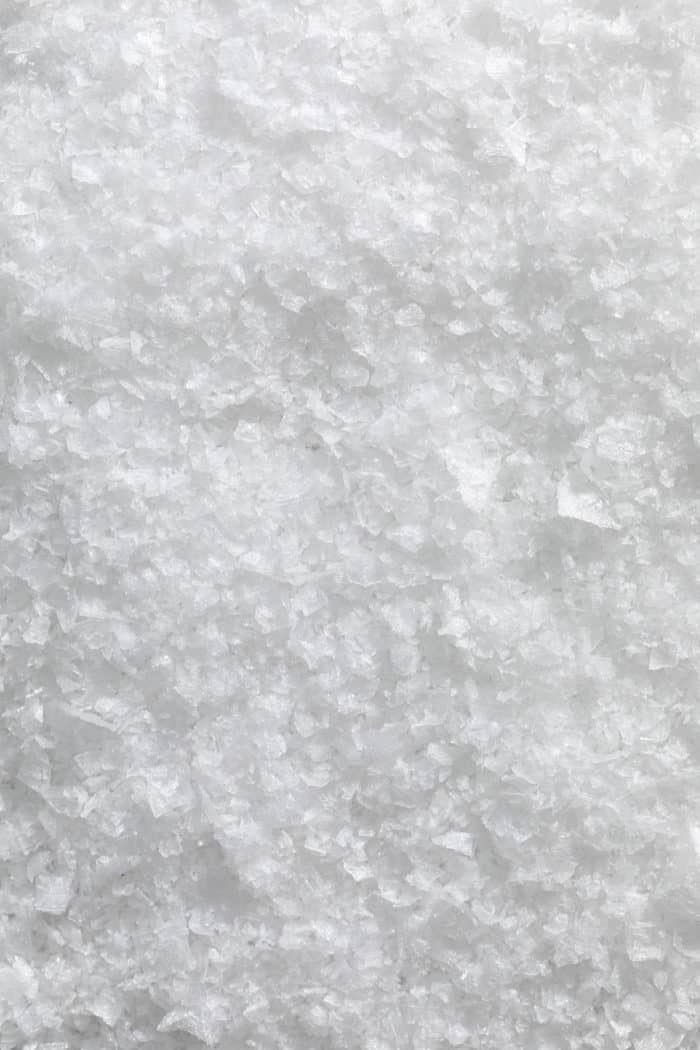
Flake salt can occur naturally but also can be produced in a variety of ways.
Because of the shape, it sticks very well to food. Maldon is the most famous flake salt.
Flake salt uses
Flake salt is often used by chefs because it is very easy to pinch and crush between your fingertips, which is good for seasoning control. You’d be hard pressed to find a chef who doesn’t have flake salt in their kitchen!
Flake salt is incredible for finishing. I recommend trying on kitchen sink cookies, apple galette, and salted caramel chocolate chip blondies.
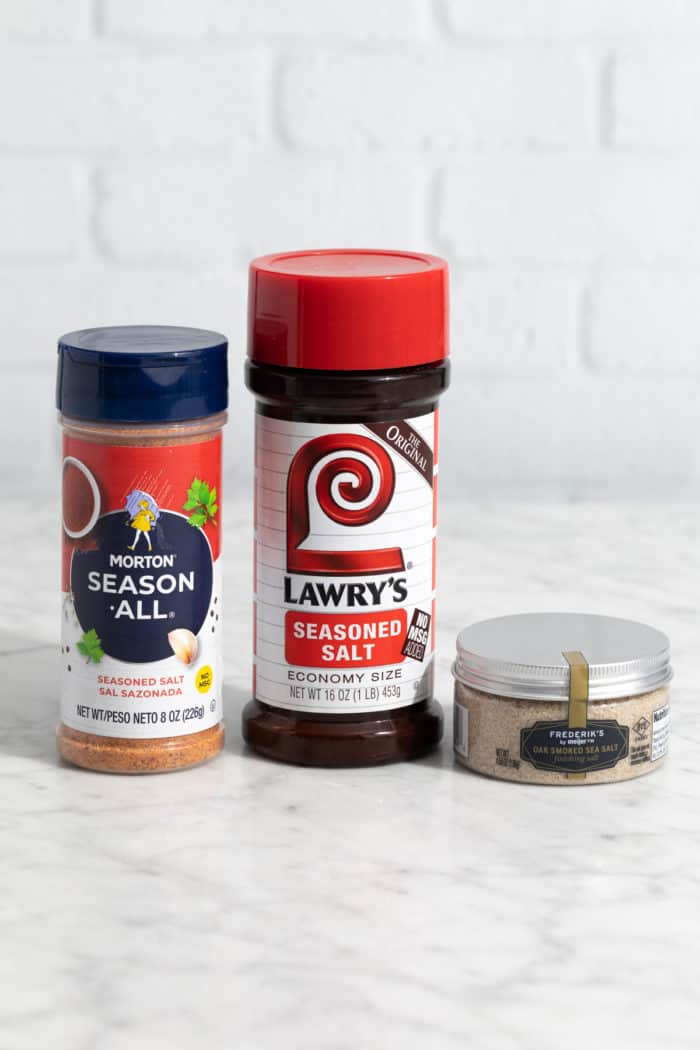
SEASONED SALT
When I was growing up, there was almost always a container of seasoned salt in the pantry. If you grew up in the Midwest, I bet you had some in your kitchen as well.
What is seasoned salt
Seasoned salt is simply a blend of table salt, herbs, and spices. The most common seasonings are onion powder, garlic powder, and paprika. Other seasonings, such as thyme, black pepper, and sugar, may be included depending on the brand.
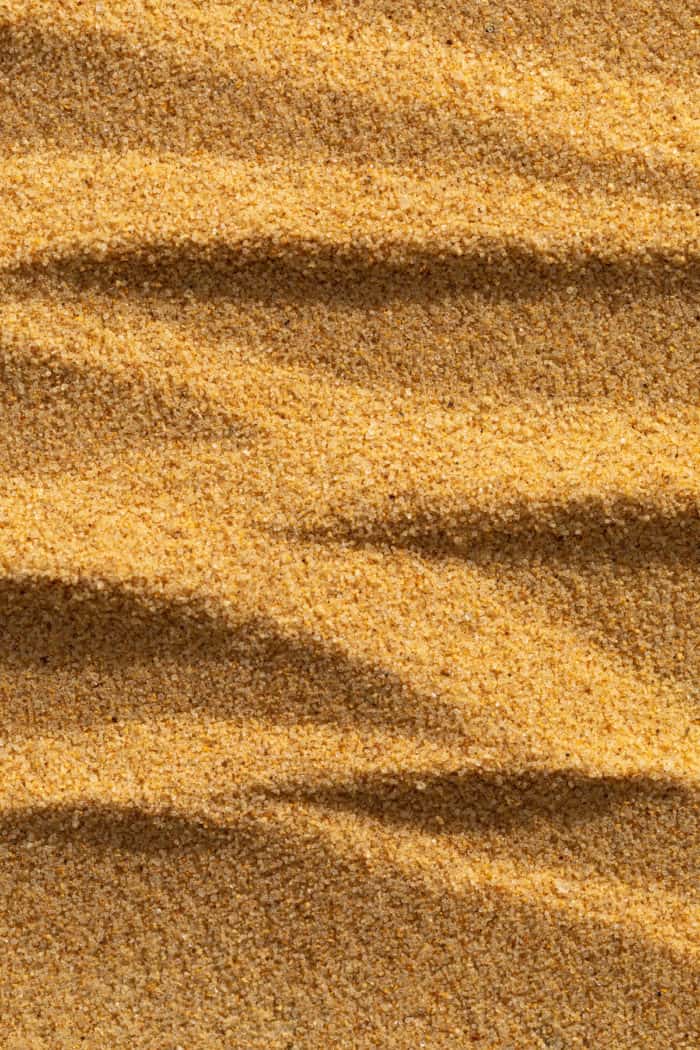
Some of the most popular brands of seasoned salt include Lawry’s, Morton Season-All, Cajun or Creole seasoning, and Old Bay.
Seasoned salt uses
Seasoned salt is used in cooking and grilling. I like to use it when making air fryer chicken tenders and french onion dip.
OTHER TYPES OF SALT
The 9 types of salt listed above are the most common salts used in home cooking, although they aren’t the only ones. Other types you might encounter include black salt, red salt, and other flavored salts (truffle salt, chipotle salt, etc.)
Whether you love cooking or baking, you should give some of these salts a try! Explore your local grocery or specialty spice shop and see what they have to offer. You might just find your new favorite salt.
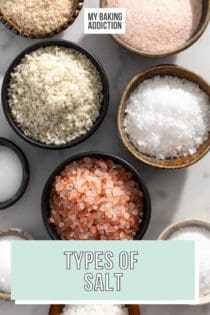









Hi,which salt is healthier for us to use.
Hi Brett – As I mentioned in the post, some folks believe pink salt is the healthiest salt but there’s not a lot of research that backs that up. Most of the research seems to indicate that salt is salt when it comes to health benefits and to use whichever salt is your favorite in moderation, but certainly it’s best to consult with your doctor regarding health matters.
-Jamie